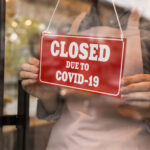Federal officials say a U.S. jet airliner nearly collided in March with an airborne drone in the sky over Tallahassee, Florida.
Jim Williams of the Federal Aviation Administration’s unmanned aircraft systems office acknowledged the incident Thursday at a San Francisco drone conference, citing it as an example of the risks posed by integrating drones into U.S. airspace.
“The risk for a small UAS (unmanned aircraft system) to be ingested into a passenger airline engine is very real,” Williams told the conference, pointing out that the famous 2009 “Miracle on the Hudson River” flight was forced to splash down in the water after a flock of geese went through its engines.
The near collision with the drone was reported to air traffic control on March 22 by the pilot of an American Airlines Group jet as the pilot approached the Tallahassee runway en route from Charlotte, North Carolina.
“The airline pilot said that the UAS was so close to his jet that he was sure he had collided with it,” Williams said. “Thankfully, inspection of the airliner after landing found no damage.”
The pilot of the 50-seat Canadair Regional Jet CRJ-200 airliner said the camouflage-colored drone was at an altitude of about 2,300 feet, five miles northeast of the airport. FAA rules state that the aircraft should be kept below 400 feet above ground level and should be flown a sufficient distance from full-scale aircraft.
The agency “is working aggressively to ensure the safe integration of unmanned aircraft systems (UAS) into the national airspace,” the FAA said in a statement Friday, adding: “Our challenge is to integrate unmanned aircraft into the busiest, most complex airspace in the world. Introduction of unmanned aircraft into America’s airspace must take place incrementally and with the interest of safety first.”
The FAA has investigated the incident, but said it had been unable to identify the drone’s operator.
The law currently requires that private individuals flying model aircraft notify the airport operator and air traffic control facility when flying within five miles of an airport, it added.
American Airlines spokesman Paul Flaningan said the airline was aware of the alleged incident and that it was investigating the matter.
The use of drones has increased dramatically in the past few years as the devices have become cheaper and more accessible to the average consumer.
Last week, the National Park Service issued a statement reminding visitors that federal regulations ban the use of drones within Yosemite National Park.
Drone sightings there have become a nearly daily occurrence in the venerated national park, with the devices buzzing loudly near waterfalls, above meadows or over treetops as guests use them to capture otherwise impossible-to-get photographs of the breathtaking landscape.
Scott Gediman, a park ranger for nearly two decades, said drones can interfere with emergency rescue operations and disrupt the activities of sensitive or endangered wildlife.
Gediman told the Associated Press that the noise of the devices can put a damper on the park experience for some visitors.
But, he added, “Most if not all of the people using these are simply unaware that they’re illegal.”




















 Four P/C Insurers Are ‘AI Titans’; AI Impact Leaders Revealed: Research
Four P/C Insurers Are ‘AI Titans’; AI Impact Leaders Revealed: Research  Millions of Homeowners May Be Underinsured Due to Secondary Structures: ZestyAI
Millions of Homeowners May Be Underinsured Due to Secondary Structures: ZestyAI  NC Supreme Court Bucks Trend, Finds COVID Caused Physical Loss to Restaurants
NC Supreme Court Bucks Trend, Finds COVID Caused Physical Loss to Restaurants  Auto Insurer Files $450M Fraud RICO Case in NY
Auto Insurer Files $450M Fraud RICO Case in NY 


